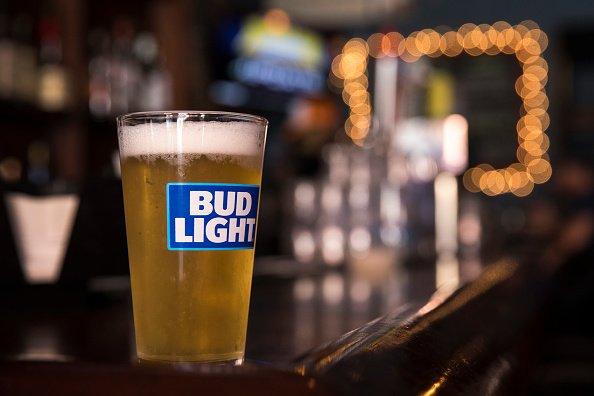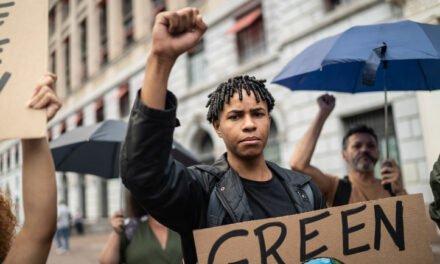
When’s the last time you felt cool? Can you even define what it is that made you feel cool and why?
Maybe you’ve never felt cool; and that’s OK too. But all of us, in some capacity, have the ability to recognize “cool” when we see it — even if we can’t define it. And a lot of what shapes our opinions of what is cool or not is created by the narratives and images we see in marketing, advertising, and the media.
Marketers have an incredible amount of power in shaping community and cultural narratives. We have a say in what’s hot or not, what’s acceptable, what’s edgy, and what we are collectively supposed to value.
The goal for brands is to create moments, stories, and narratives that connect to people so that they associate the “cool” of the product with themselves by the mere act of purchase. Sometimes this can go to the extreme. Sometimes, people feel so connected to a brand that it becomes intertwined with how they see themselves as a person. This can cause tension in their relationships and their self-esteem if a brand’s messaging deviates from what is expected. Another extreme is when people overlook or disregard the motives and intentions of the gatekeepers behind the messaging and use it to perpetuate harmful stereotypes or weaponize the narrative to cause harm to marginalized people.
The Tipping Point
What do I mean? In April 2023, Bud Light paid to sponsor a post on Instagram with a transgender social media influencer, Dylan Mulvaney. She has millions of followers on TikTok and Instagram and is also a spokeswoman for Olay and Nike. This isn’t even the first time Bud Light partnered with her; she was an existing brand partner. This particular post, which featured a single commemorative can of Bud Light to celebrate a milestone in her transition journey, went viral and started off a firestorm of criticism (and praise!) that was a defining moment for the brand. Ultimately, it was a moment they wasted.
The single post threatened the very concept of self for many right-leaning beer drinkers who hold a narrow, exclusive view of who should drink their beer — or perhaps more to the point, whose humanity is worth honoring. So much so that they shot Bud Light cans in effigy. It was the talk of all the right-wing pundits and dominated the news cycle. It also created an opportunity for Bud Light to make connections with a new segment of the market that would have historically been excluded from their marketing, but executives walked back the promotion and in doing so, managed to upset everyone.
Under the Social Media Influence
Beer has steadily been losing market share to spirits and other niche alcoholic beverages since around 2010. Americans have been losing their taste for it, reflected in the steady rise of tequila and ready-to-drink cocktails. Remember when White Claw hit the market? I don’t even drink and I knew what it was because it became a cultural phenomenon. Beer wasn’t dead by any means, but enthusiasts were gravitating toward smaller craft breweries rather than mass-produced national brands.
This left Bud Light with a quandary. Their main target audience was men between 21 and 34 who enjoy sports, humor, and socializing. Remember the “Whassup?” commercials from the 2000s or the “Real Men of Genius” commercials in the 1990s? That era is long past. Data is showing that today’s drinkers in this age range are, as a whole, gravitating towards hard cider, seltzers, spirits, and even wine. The old channels and old messaging weren’t going to work for new drinkers.
Calling for Another Round of Inclusivity
It made complete sense for Alissa Heinerscheid, the first and only woman to helm the VP of Marketing role in Bud Light history, to broaden the scope to reach new, untapped audiences who might not have included Bud Light in their consideration set.
In 2018, McKinsey & Company declared Gen Z “radically inclusive.” They are complete digital natives, mobilize for causes they believe in, and prioritize self-expression. Both Millennials and Gen Z are pushing brands to be more inclusive and reflect that in their advertising, marketing, and sales practices.
Beyond the pull of the consumer voice, it’s our role as marketers to demand that campaigns and messaging be authentic, inclusive, ethical, and not performative. We have a responsibility to our organization, but we also have a responsibility to our community and to society as a whole to develop practices and messages that are honest, equitable, and inclusive.
A Response Gone Flat
When the uproar started, Bud Light made a classic mistake. They walked back the campaign. Anheuser-Busch CEO Brendan Whitworth made some mild, middle-of-the-road statements about not wanting to be “divisive” and doubling down on the traditional beer imagery of America! Sports! Military! Flags! Hard Work! He threw in as many right-wing, patriotic buzzwords he could. He put Heinerscheid and another VP on leave and noted that Bud Light will be realigning the team on their marketing strategy.
The campaign in itself was bold for Bud Light, which has never been known for inclusivity. It’s never been a brand value and it isn’t necessarily a priority for the traditional Bud Light drinker. Still, as I already mentioned, inclusive messaging and actions are the future, and there really is no ignoring it. By reaching out to the LGBTQIA+ community, specifically the trans community, Bud Light was taking steps to create that narrative of inclusivity and broadening the scope and appeal of the brand to those who would not have previously felt welcome in the “American Bro” messaging of Bud Light’s past. It was a calculated risk. It was guaranteed to cause pushback and vitriol from conservative media figures, GOP politicians, right-leaning entertainers, and some of the public. This was a given going into the campaign. However, it was an opportunity to demonstrate to a wider audience that Bud Light is a brand that can be trusted to stand by its commitment to be “easy to drink, easy to enjoy,” and double down on the efforts to be welcoming to new drinkers.
Bud Light’s response did 3 things:
- It angered a portion of their core audience.
- It angered a new target audience and demonstrated that the messaging was performative —not supported by the full organization — breaking any possible trust with a new demographic.
- It reinforced negative stereotypes about the trans community. By backpedaling so quickly, and so specifically, Whitworth essentially furthered the narrative of what spaces are appropriate for trans folks. In the reversal, CEO Whitworth said that Bud Light has “a proud history supporting our communities, military, first responders, sports fans and hard-working Americans everywhere.” The clear but unspoken message here is that Bud Light has a history of supporting places that traditionally exclude trans people with prejudice. There was nothing “easy” about the Bud Light experience for the trans community.
Last Call for Marketers Who Refuse Inclusivity
Every brand and marketing team that adopts an inclusive framework to its messaging and practices, or even just centers diversity, may experience resistance and pushback, whether it is internally, externally, or both.
Some of the pushback we see is framed as an oversensitivity to the ideas of inclusion and representation themselves. It is easy for those in the dominant culture to overlook, dismiss, disregard, or outright refuse to make space for the evolution of words, ideas, and concepts that aren’t comfortable or familiar. It can feel threatening to feel like you are wrong, and sometimes even change can feel frightening or unsure. In moments like these, we need to understand where the resistance is coming from and also stay the course on the intentionality of our diversity, equity, and inclusion efforts.
For brands that are committed to DEIJ and are investing their time, resources, and team to truly work to dismantle the unjust systems and policies within their organization and create sustainable, transformational change — they have to be willing to accept and navigate the vitriol, hate, and weaponization of this work and see beyond it. It isn’t for the faint of heart just as much as it is critical for justice.
Marketing narratives have become part of the culture wars. There will likely be pushback over even the smallest change, like the type of cartoon shoes on an M&M. There will possibly be controversy. The worst thing a brand can do is “walk it back.” Unless there is a valid criticism where harm was caused, this anti-DEIJ resistance is just noise. For those microwaving their Nikes, taking a baseball bat to their Keurig, or dumping their cornflakes in the toilet — I have two things to say. First, they still bought the products before they destroyed them. Secondly, convenience, habit, and inertia will overcome a lot of moral outrage. Brands stand to increase awareness and gain customers who support so-called “wokeness” if it is genuine and supported by actual evidence of justice-centered policies and practices. By reversing course or apologizing for inclusive messaging, you are placating the vocal few and losing trust with a wider audience. It’s a trap exacerbated by capitalism. Don’t do it.
The furor over this campaign will die down and loyalists will still be chugging their Bud Lights. But as that pool grows smaller and smaller, I have to wonder how long it will take for Anheuser-Busch to realize that Heinerscheid was right?


















